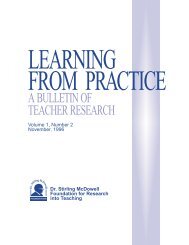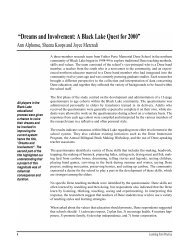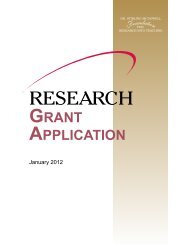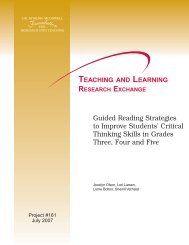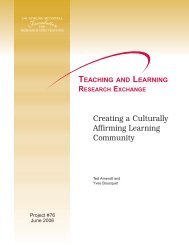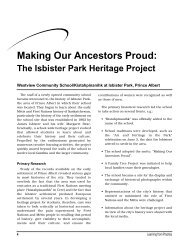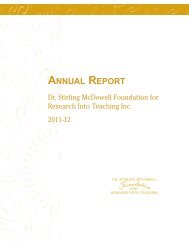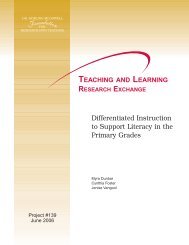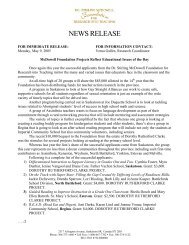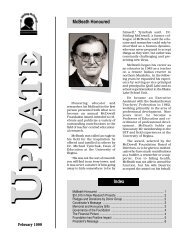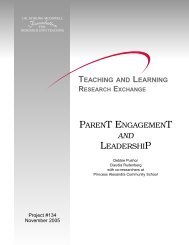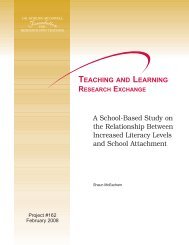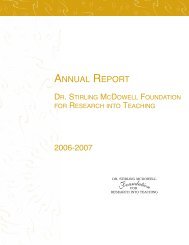Involving Community Members to Develop Culturally Relevant Word ...
Involving Community Members to Develop Culturally Relevant Word ...
Involving Community Members to Develop Culturally Relevant Word ...
You also want an ePaper? Increase the reach of your titles
YUMPU automatically turns print PDFs into web optimized ePapers that Google loves.
PhySiCAL deVeLOPMent<br />
Families worked hard <strong>to</strong> provide for their children and the elderly people. The men provided<br />
food for their families. They hunted game animals, trapped small animals, fished, built cabins,<br />
made <strong>to</strong>ols, and taught their sons <strong>to</strong> do the same. The women cooked meals, hauled wood and<br />
water, picked berries and medicinal plants, raised children, and provided strong moral support<br />
for their families. The physical work was demonstrated by all people in the community. Children<br />
grew up <strong>to</strong> become strong individuals who in turn provided for their own families.<br />
Years ago children used <strong>to</strong> work hard for everything. Everyone in the family<br />
had <strong>to</strong> work <strong>to</strong>gether in order <strong>to</strong> provide for their livelihoods. Before<br />
electricity or running water, people had <strong>to</strong> work hard; they had <strong>to</strong> get their<br />
own wood and water. Girls and boys worked on wood and water. Children<br />
went with their parents <strong>to</strong> check fish nets and traps. This was how they<br />
were prepared for adulthood, how <strong>to</strong> survive. Women and girls hung moss<br />
for diapers. Boys went with their fathers <strong>to</strong> get wood. They would chop<br />
trees down, saw them up with a hand saw, chop the wood, and pile the<br />
wood up <strong>to</strong> be used for the winter. Girls learned <strong>to</strong> plant and cultivate the<br />
ground for gardens. (Personal communication, 2008)<br />
MentAL deVeLOPMent<br />
The Elders were asked how <strong>to</strong> prepare the children <strong>to</strong> utilize their mental capabilities, how <strong>to</strong> use<br />
their thinking skills, how <strong>to</strong> learn, and ways <strong>to</strong> retain information and <strong>to</strong> be able <strong>to</strong> make decisions.<br />
I think that the teachers should show that they genuinely care for the wellbeing<br />
of children. I think that children should be taught in a kind and loving<br />
manner. I think that if they know that the teacher cares about them and<br />
treats them kindly that they [children] learn better in that environment. I<br />
know from experience that the children that I taught were never<br />
disrespectful, because I used <strong>to</strong> talk <strong>to</strong> the children calmly whenever they<br />
did something that they were not supposed <strong>to</strong> do. I used <strong>to</strong> explain <strong>to</strong> the<br />
children why the bad behaviour was not acceptable in a kind, gentle<br />
manner—no yelling. (Personal communication, 2008)<br />
46 RESEARCH REPORT: <strong>Involving</strong> <strong>Community</strong> <strong>Members</strong> <strong>to</strong> <strong>Develop</strong> <strong>Culturally</strong> <strong>Relevant</strong> <strong>Word</strong> Lists for First Nations and Métis Students



